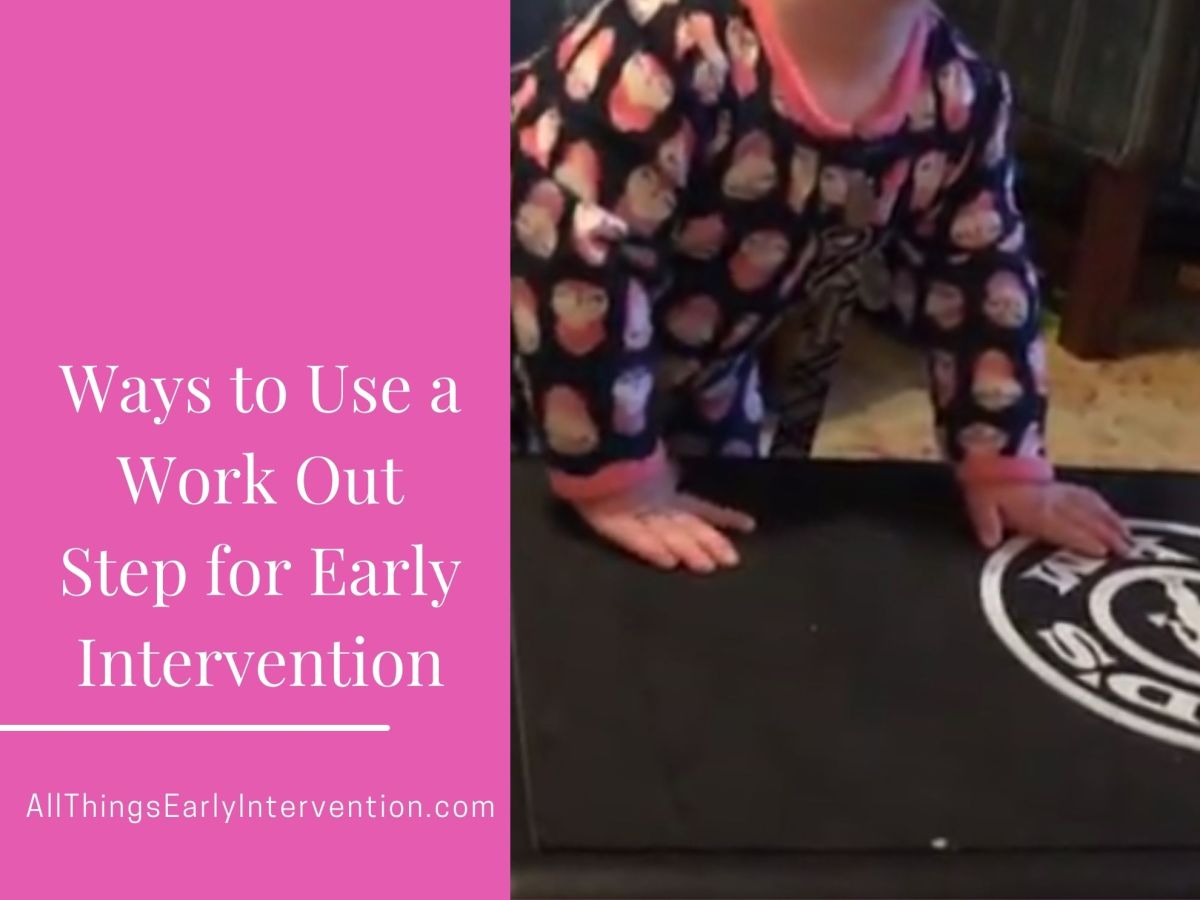Does anyone else have one of these hanging around their house? A step from the step aerobics classes from the 80’s? I bought this when I had a knee injury and needed to do the physical therapy exercises at home. I never got rid of it, and I’m so glad I didn’t! When Little Monkey and Little Pumpkin came to live with us, we really had to flex those creativity muscles to keep Little Monkey from climbing the walls. One of the things I tried was the aerobic step. Little Monkey liked it well enough, but the real benefit of the step was highlighted when Little Pumpkin played with it. Watching how the two of them enjoyed this random item from my garage inspired me to write this so that I can share with the world “Ways to Use an Aerobic Step in Early Intervention!”
An aerobic step isn’t just for your jazzercise workouts anymore. It can actually be a fantastic tool to help your little one develop a whole range of important gross motor skills
- Prepare for crawling. Place baby on all fours, hands on step. This is a great way to strengthen those core muscles they’ll need for crawling. The slight elevation helps them feel the position without getting frustrated by gravity. Add a favorite toy on top of the step as an extra incentive to reach and grab.
- Holding on with one hand, Reaching for a toy. While your baby is in this position, move a motivating toy just a little further to encourage weight shifting.
- Add Height to the step over time as baby gets the hang of it to pull-up a little bit higher
“The slight elevation makes it easier to feel their body in this position but limits the amount of gravity they are working against (think of doing a push-up on the wall versus the floor). They are working on the necessary core strength needed to pull themselves up and also getting a feel for where their body is in space in this position. Make sure that you have a fun toy for baby to play with in this position!”
5 Ways To Promote Pulling To Stand, by Chanda Jothen at PinkOatmeal.com (2014)
- Standing Tall: As your baby gets closer to pulling themselves up, the step can provide the perfect boost. Add some height to your step and a crawling baby can use it to hauling themselves up to a standing position. Remember, this is a work in progress, so be there to lend a hand (literally) for support.
Placing desirable objects within reach, allows the child opportunities to lift hands off support surface and manipulate objects. This will allow for weight shifting which is essential in the development of crawling. We can continue to challenge the child by moving objects farther from their reach, encouraging movement towards objects and facilitating independent mobility.
Teaching Children to Crawl at DinoPT.com (2016)
- Stair Stepping: Once your little one is cruising around confidently, they can practice stepping up onto the platform of the step, which is the same motion of climbing stairs. This helps them develop balance and coordination, to prepare for real stairs.
When a child is able to four-point crawl but is not yet walking independently, the child can creep up stairs and creep down the stairs backward on his belly. Many children are interested in creeping up the stairs, but may be resistant to coming down backward. Activities such as coming down off the couch and bed backward and sliding down a slide backward serve as practice for coming down the stairs backward.
Walking Up and Down the Stairs. Feb 15, 2014 at Chop.edu, Children’s Hospital of Philadelphia.
- Jumping Fun: For older toddlers, (or sensory seekers like Little Monkey) the step can be a launching pad for jumping practice. They can start by stepping off the platform (always with you nearby!), and progress to jumping off the step.
Safety First!
- Always supervise your child when they’re using the step.
- Place the step on a non-slip surface to prevent wobbling.
- Make sure there’s plenty of padding around the step in case of falls.
So there you have it! With a little creativity and an old step, you can turn playtime into a fun and developmental adventure for your little one. Every home has its own stuff. Learning how to use what you have to teach babies in their natural environment can be a creative puzzle. What are some non-baby items you use to promote indoor gross motor development for babies?
Discover more from All Things Early Intervention
Subscribe to get the latest posts to your email.


